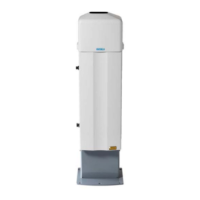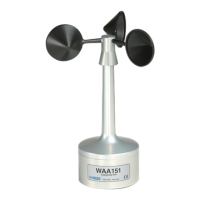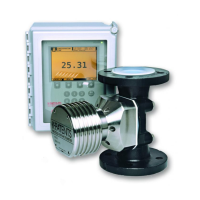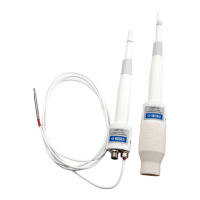Ceilometer CT25K
CT25K-U059en-2.1 User’s Guide
51
Height Normalization
Assuming a clear atmosphere, it can be seen that the power is inversely
proportional to the square of the distance or height i.e., the strength of a signal
from 10,000 ft is generally one-hundredth of that from l,000 ft.
The height-square dependence is eliminated by multiplying the value
measured with the square of the height (height normalization). However,
noise, being height-independent from a measurement point of view, will then
be correspondingly accentuated with increasing height.
The Backscatter Coefficient
The volume backscatter coefficient, ß(z), of the Lidar Equation represents the
portion of light which is reflected back towards the Ceilometer from a
distance z (e.g., by water droplets). It is obvious that the denser a cloud is,
the stronger the reflection will be. The relationship can be expressed as:
ß(z) = k·σ(z)
where
k is a "constant" of proportionality.
σ(z) is the extinction coefficient (i.e., the attenuation factor in a
forward direction).
The extinction coefficient relates to visibility in a straightforward manner. If
visibility is defined according to a 5 % contrast threshold (World
Meteorological Organization definition for Meteorological Optical Range
MOR, equals daylight horizontal visibility), then
σ = 3 / V
where
σ is the extinction coefficient
V is MOR visibility (5 % contrast)
The "constant" of proportionality, k, also called the Lidar Ratio, has been
subjected to a lot of research. Although the Lidar Equation can be solved
without knowing its value, it must remain constant with height if accurate
estimates of the extinction (or visibility) profile are to be made.
It has been found that in many cases, k can be assumed to equal 0.03, tending
to be lower in high humidities, to 0.02; and higher in low humidities, to 0.05.
However, in e.g. precipitation of various kinds, k will have a wider range of
values.
Assuming a value 0.03 (srad
-1
) for k and visibility in clouds being in the range
PIWJLYHVWK HUDQJHRIYDOX HIRU
= 0.0006...0.006 m
-1
srad
-1
= 0.6...6 km
-1
srad
-1
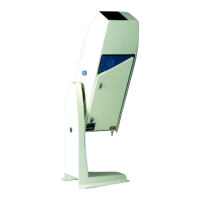
